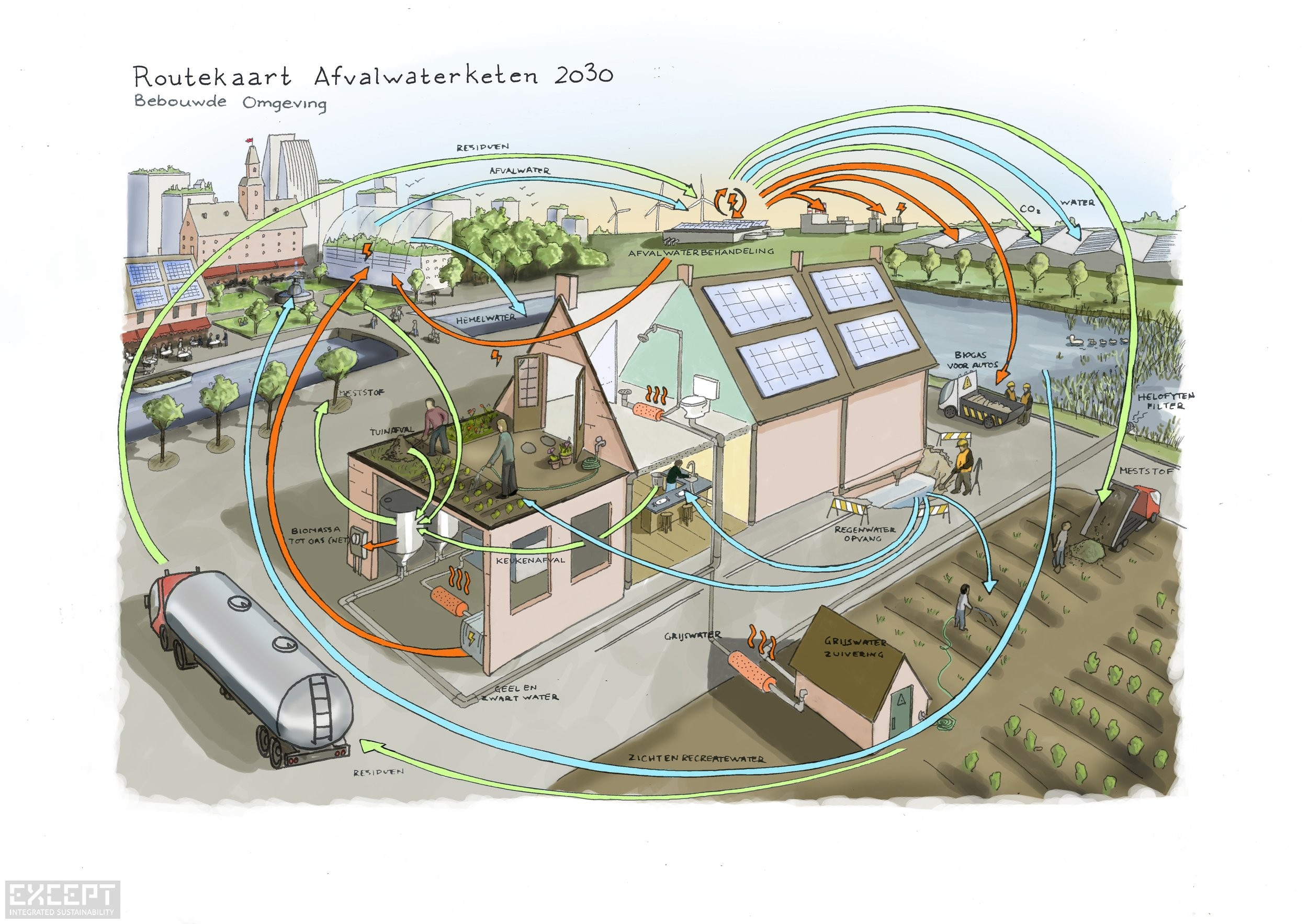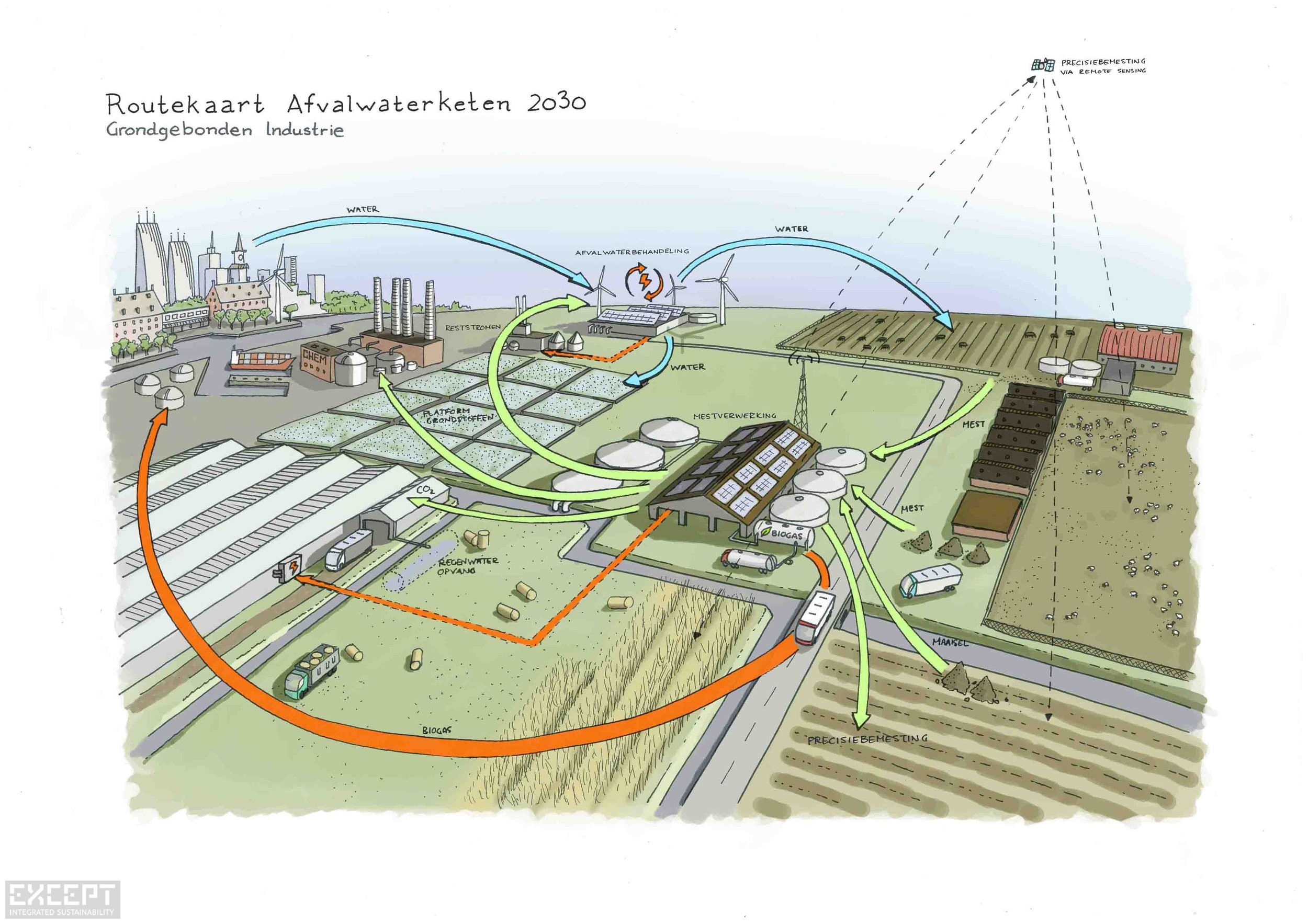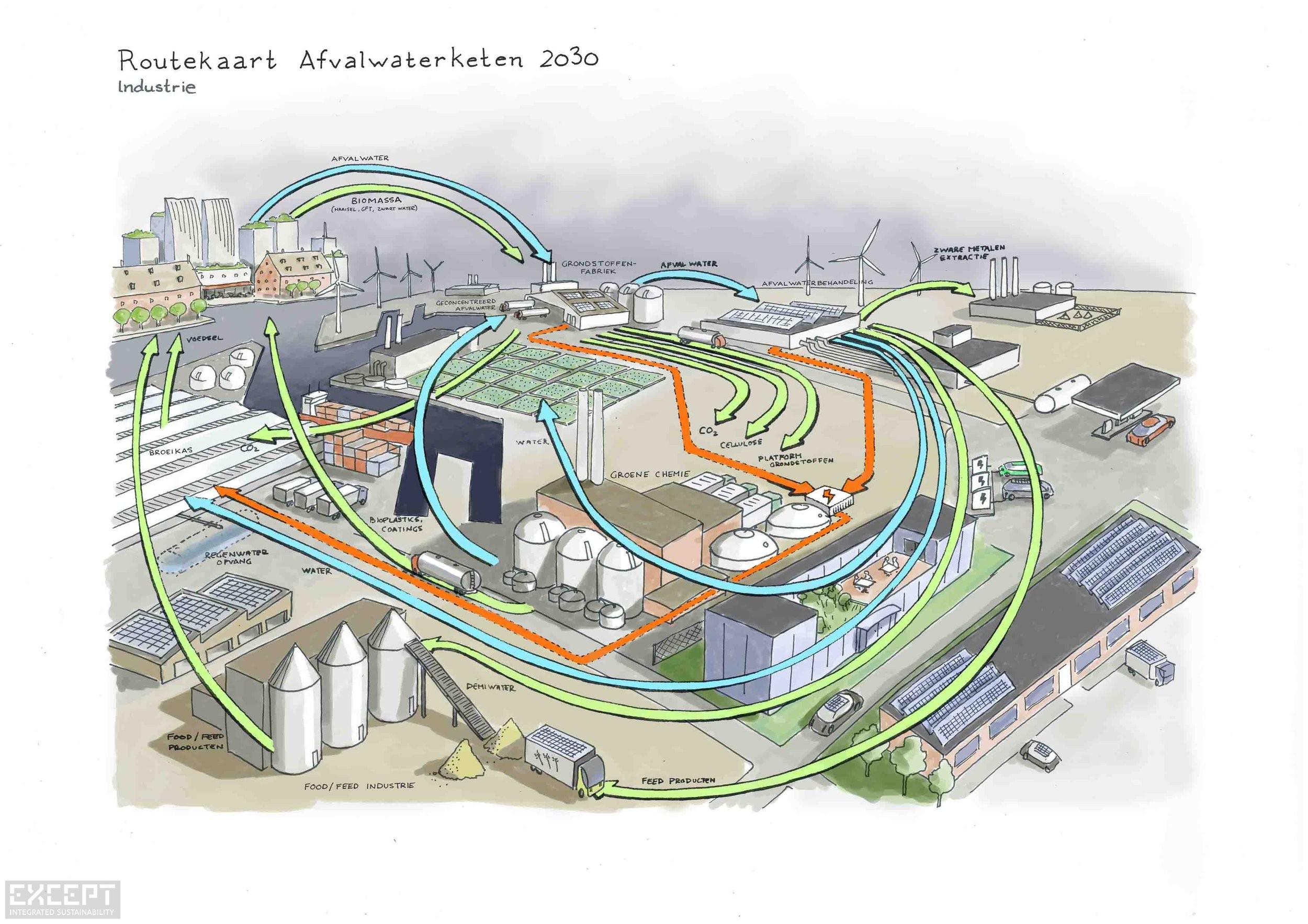

DNV Waste Water Chains
A Vision for wastewater treatment in the Netherlands
Jul 02, 2012

This project visually explores the Dutch wastewater sector moving toward 2030. It takes a closer look at the role of wastewater processing facilities in providing clean water, renewable energy, and valuable material inputs for the future society. The vision for 2030 concerns the role of wastewater management in four significant parts of society: the built environment, agriculture, industry, and natural lands.

A vision for 2030
Presently, wastewater is treated by extensive, centralized facilities that function more or less linearly. Greywater (from sinks, showers, washing machines, etc.) and black water (from toilets or industrial sources) are treated by a series of processes and returned to different levels of quality.
However, this configuration of wastewater treatment misses out on a wide range of opportunities for making our cities and industries more sustainable. Moving to more integrated, distributed, and multi-functional wastewater treatment facilities can help provide cities with clean and renewable energy and heat, an initiative with valuable raw materials, and agricultural land and urban farms with fertilizers.


Visualizing the future
This project is a series of illustrations that visually explore and map the different possible material, energy, and water flows that a wastewater treatment facility could manage as a decentralized service provider in 2030. By utilizing current and developing technologies such as heat exchangers, biogasifiers, and precision fertilization of agricultural lands via remote sensing, we lay out an image of what cities, industries, and agriculture might look like in the coming decades.
These illustrations are part of the report Afvalwaterketen Toekomstvisie 2030 (Wastewater chain vision for 2030) developed in the Netherlands by De Stichtse Rijnlanden.
July 2, 2012
Director
Industrial Ecologist
Except Integrated Sustainability
Industrial Ecologist, Designer
Except Integrated Sustainability